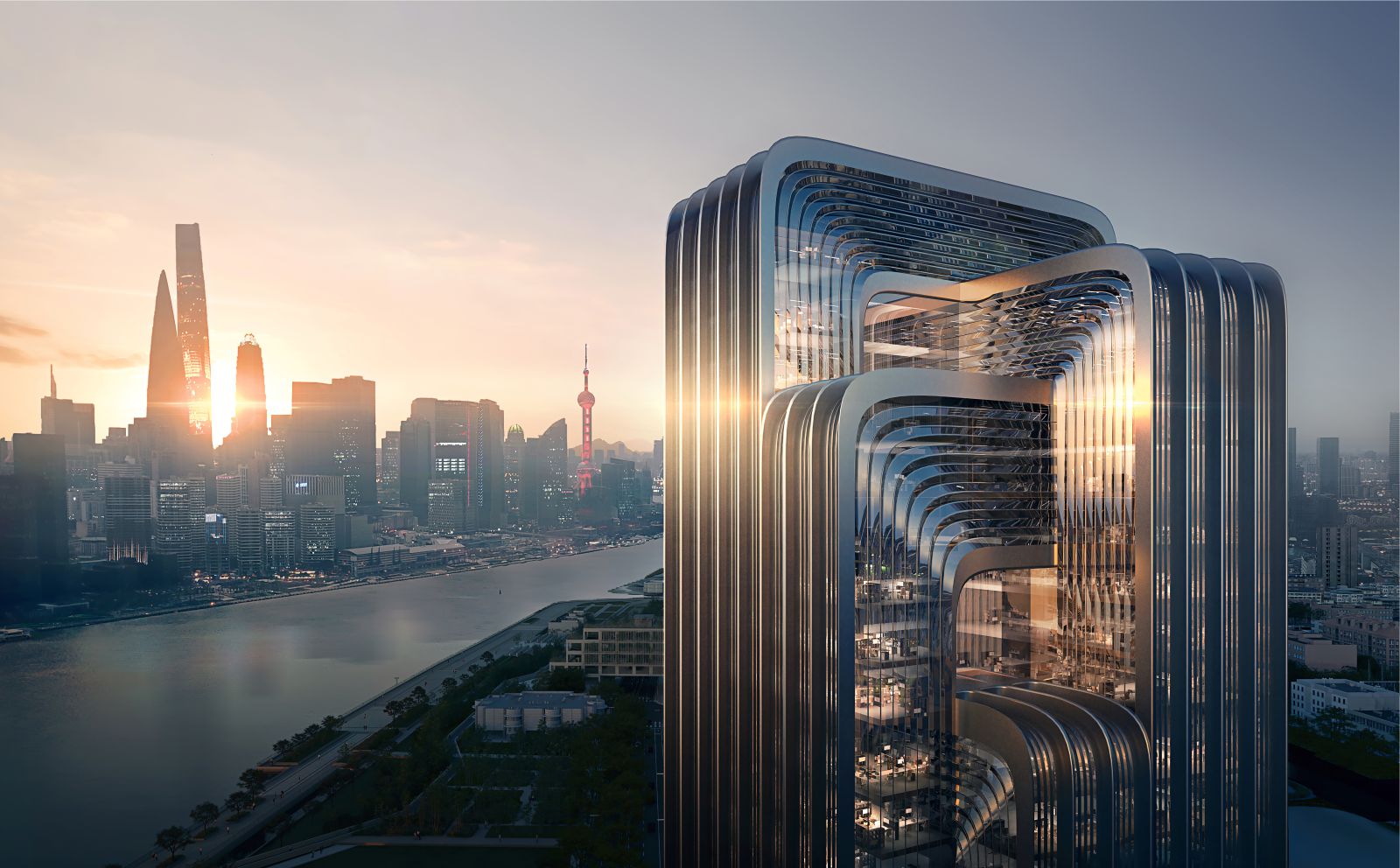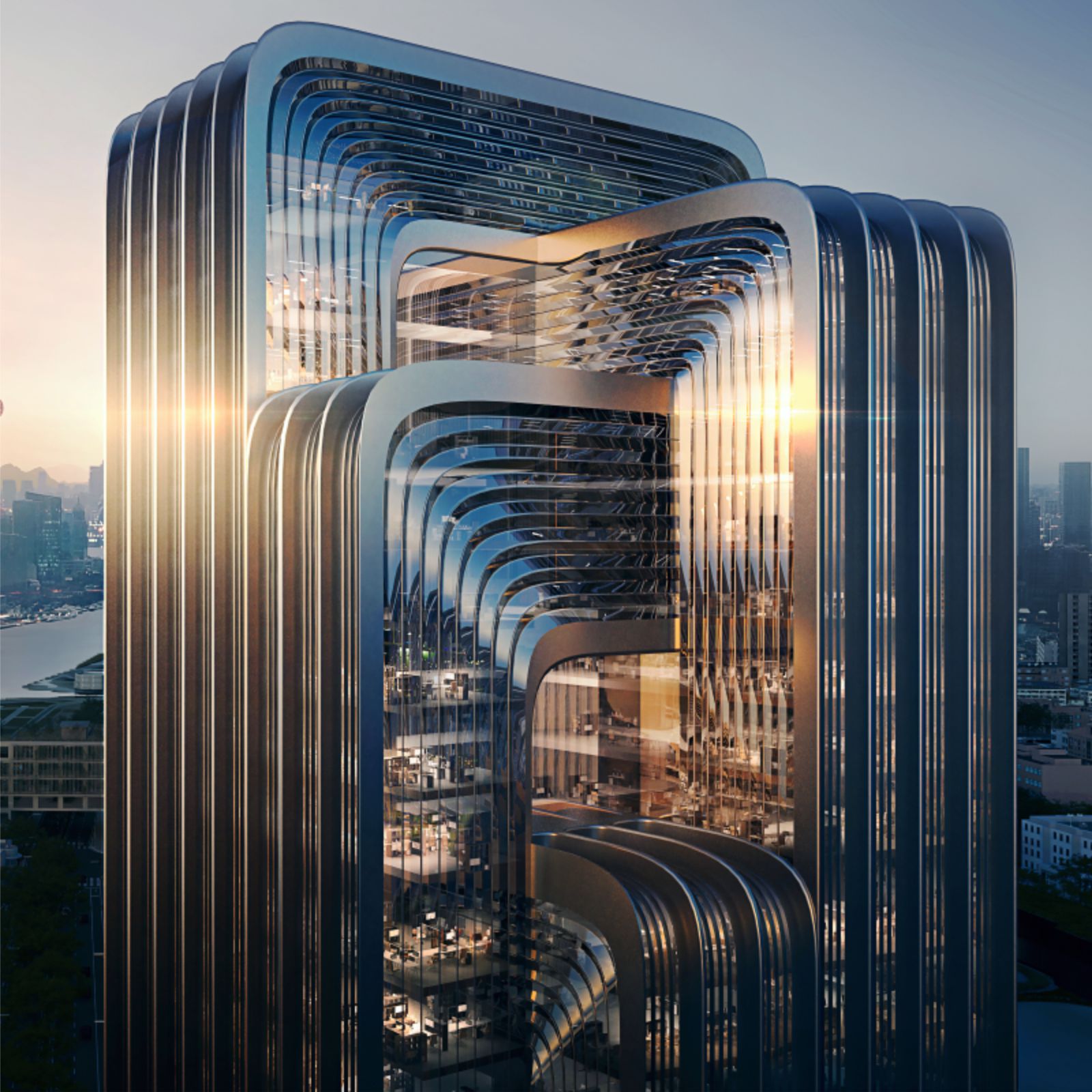Following the international design competition, Zaha Hadid Architects has been selected to build the new Shanghai headquarters of the China Energy Conservation and Environmental Protection Group (CECEP), a company initiating and funding projects with a focus on renewable energy technologies. Continuing their commitment to renewable energy and environmental conservation, the new CECEP headquarters in Shanghai has been designed to be the ‘greenest’ building in the city with sustainability embedded into every aspect of its design and construction to achieve more than 90 credits in China’s exacting Three Star Green Building Rating system – the highest score for any building in Shanghai.
The 218,000 sq.m headquarters sets new benchmarks for the city in energy conservation, energy efficiency and sustainability. Located adjacent to the Yangpu Bridge on the Huangpu River, the design responds to its riverfront site and is defined by the history and dynamism of Shanghai. A mixed-use urban campus of three office towers, shopping, dining and leisure facilities linked together by a park that connects directly with the city, the new headquarters echoes CECEP’s commitment to environmental education by creating vital new public spaces for its staff and neighbouring communities to enjoy the natural world. Incorporating rainwater harvesting to irrigate expansive green spaces and landscaping in a biophilic design that enhances indoor-outdoor connectivity, the design also minimises cooling demand through optimised external shading.
Extensive use of locally-produced, prefabricated components will reduce the project’s embodied carbon and also support the local economy while procurement will prioritize the use of recycled materials. Photovoltaics located at roof level and within the façades are connected to battery storage and a micro-grid to provide on-site energy production that will reduce energy consumption by 25%. In addition to high-efficiency heating and ventilation with waste heat recovery, together with cooling systems using non-potable water, the new headquarters will also use thermal ice storage for cooling.
Ice generated by chillers at night using off peak electricity is stored in thermal tanks then used for cooling during the day to significantly reduce peak daytime electrical consumption when the cooling load is highest. The building management system will continually monitor the interior environment and automatically react to changes in internal conditions such as variations in temperature, air quality, natural daylight, or number of occupants. The new headquarters will use 5G network capability to operate intelligent management and biometric security systems that will eliminate contact with communal surfaces by staff and visitors. Source by Zaha Hadid Architects (ZHA).
- Location: Shanghai, China
- Architect: Zaha Hadid Architects (ZHA)
- Design: Patrik Schumacher
- ZHA Project Directors: Satoshi Ohashi, Michele Pasca di Magliano
- ZHA Project Designer: Maria Tsironi
- ZHA Project Associate: Yang Jingwen
- ZHA Project Architect: Johannes Elias
- ZHA Competition Team: Nan Jiang, Maria Touloupou, Martina Rosati, Nicolas Tornero, Serra Pakalin, Chantal Matar, Yihui Wu, Ying Xia, Zheng Xu, Carlos Bausa Martinez, Lorena Espaillat Bencosme, Irfan Bhakrani, Federico Fauli, Stefano Iacopini, Shi Qi Tu, Sara Criscenti, Andres Madrid, Arian Hakimi Nejad, Valentina Cerrone, Stefano Paiocchi, Kate Hunter, Nelli Denisova, Che-Hung Chien
- Civil, Structural, MEP & Sustainability engineers: Ramboll
- Local Design Institute: China Academy of Building Research
- Area: 218,000 sq.m
- Year: 2020
- Images: Negativ.com, Courtesy of Zaha Hadid Architects (ZHA)



